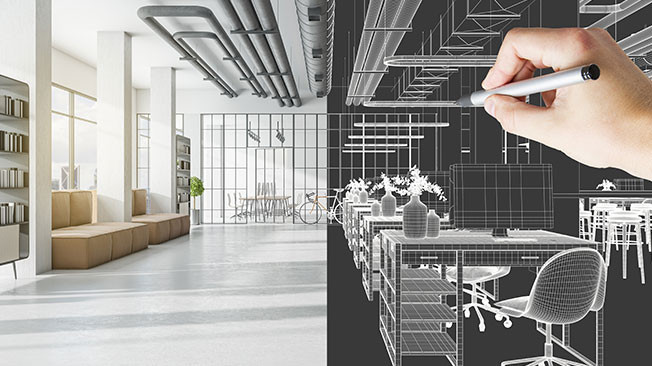views

The Visualization and 3D Rendering Software Market is undergoing a rapid transformation, driven by advancements in artificial intelligence (AI) and machine learning. Traditional rendering processes that once required extensive manual adjustments and long processing times are now being revolutionized by AI-powered rendering engines that optimize lighting, textures, and real-time performance. As industries such as architecture, gaming, film production, and product design continue to demand high-quality, photorealistic visuals, AI-driven solutions are becoming the future of 3D visualization. By integrating machine learning algorithms, modern AI rendering software can automate scene generation, improve efficiency, and drastically reduce rendering times.
The Role of AI in 3D Rendering and Visualization
AI is transforming 3D rendering by automating complex tasks that traditionally required manual fine-tuning. Machine learning in 3D visualization enables software to analyze and predict optimal rendering settings, leading to faster, more accurate, and more realistic outputs.
1. AI-Driven Rendering Engines for Optimized Lighting and Textures
Lighting and texture optimization are two of the most time-consuming aspects of 3D rendering. AI rendering software leverages deep learning algorithms to automatically adjust lighting, reflections, and material textures based on real-world physics and artistic intent.
· Lighting Optimization: AI-powered rendering engines analyze a scene and intelligently place light sources to ensure realistic illumination, shadows, and reflections. Advanced techniques such as global illumination (GI) and ray tracing are enhanced by AI, significantly improving rendering speed without compromising quality.
· Texture Enhancement: Machine learning in 3D visualization allows rendering engines to generate high-resolution textures from low-quality images, reducing the need for artists to manually create detailed surface textures. AI can also intelligently apply materials based on object recognition, streamlining the texturing process.
2. Real-Time Rendering AI for Faster and More Efficient Visualization
Real-time rendering AI has become a game-changer in industries such as gaming, virtual production, and architectural visualization. Traditional rendering techniques often required hours or even days to generate a single frame of a high-resolution 3D model, but AI-powered solutions have significantly reduced this time.
· Deep Learning Super Sampling (DLSS): Technologies like NVIDIA’s DLSS use AI-powered upscaling to render frames at lower resolutions and then enhance them to higher resolutions in real-time, reducing the computational load while maintaining high visual fidelity.
· Real-Time Ray Tracing: AI has accelerated the ray tracing process by intelligently predicting and refining how light interacts with objects, allowing for realistic lighting effects in real-time environments. This is particularly beneficial for game engines and VR simulations.
With real-time rendering AI, artists and designers can see changes to their models instantly, allowing for faster iterations, enhanced creative control, and better overall efficiency.
3. Automating Scene Generation with AI
One of the most significant breakthroughs in AI-powered 3D rendering is the automation of scene generation. Traditionally, artists had to manually design and populate 3D environments, which was time-intensive. AI-driven tools can now automatically generate complex scenes, reducing production time and improving creativity.
· Procedural Content Generation: AI can generate buildings, landscapes, and interiors by analyzing datasets of real-world structures. This is particularly useful in architectural visualization and open-world game development, where vast environments need to be created efficiently.
· Automated Object Placement: AI algorithms analyze a scene and intelligently place objects in realistic positions, ensuring proper spatial composition without requiring extensive manual adjustments. This is beneficial for urban planning, interior design, and film production.
By automating scene creation, AI-powered tools allow artists to focus on refining details and enhancing artistic expression rather than spending time on repetitive tasks.
How AI Reduces Rendering Times and Improves Workflow Efficiency
The time required to render 3D models and animations has long been a bottleneck for industries relying on visualization. AI-driven optimizations are helping studios and professionals achieve faster rendering without sacrificing quality.
1. AI-Powered Denoising for Faster Image Processing
A major breakthrough in AI-assisted rendering is AI-based denoising, which allows rendering engines to produce cleaner images with fewer rendering samples. Traditional rendering methods required thousands of samples per pixel to achieve smooth and noise-free results. AI-driven denoisers can achieve similar quality with significantly fewer samples, thus reducing rendering time.
· Deep Learning-Based Denoising: AI-trained models analyze noisy render previews and predict the final high-quality output, effectively removing noise in seconds instead of hours.
· Adaptive Sampling: AI intelligently determines which areas of a render require more detail and prioritizes rendering resources accordingly, optimizing computational efficiency.
2. Smart Resource Allocation for High-Performance Rendering
AI improves rendering efficiency by dynamically allocating system resources based on scene complexity and rendering requirements. This ensures that:
· High-priority elements (such as main characters in an animation) receive more processing power.
· Background elements are rendered with optimized detail, saving time and computing resources.
· Cloud-based AI rendering services distribute tasks across multiple GPUs, speeding up large-scale rendering projects.
Industries Benefiting from AI Rendering Software
The impact of AI-powered 3D rendering is being felt across multiple industries, each benefiting from improved speed, efficiency, and visual realism.
1. Architectural Visualization
AI rendering software has revolutionized the architecture and real estate industries by enabling faster design iterations and immersive visualizations. Architects can now:
· Instantly generate photorealistic renders of building interiors and exteriors.
· Use real-time rendering AI to explore different lighting conditions and materials interactively.
· Automate urban planning by leveraging AI-generated 3D models of cityscapes.
2. Gaming and Virtual Reality (VR)
The gaming industry heavily relies on machine learning in 3D visualization to create realistic characters, environments, and special effects. AI enables:
· Procedural generation of game worlds, reducing manual design effort.
· Real-time AI-driven rendering, ensuring smooth gameplay even on low-powered hardware.
· Intelligent AI animations, where machine learning improves character movement and physics-based interactions.
3. Film and Media Production
Hollywood and digital content creators are using AI-powered rendering engines to streamline CGI and special effects production. AI assists in:
· Automating scene composition, reducing the time needed for set design.
· Enhancing CGI character realism by improving facial expressions and skin textures.
· Accelerating post-production editing with AI-driven video rendering.
4. Product Design and Manufacturing
In industries such as automotive and consumer electronics, AI-driven 3D visualization helps designers:
· Quickly prototype and visualize new product models.
· Automate materials and texture mapping to ensure accurate simulations.
· Conduct AI-driven simulations to predict product performance under real-world conditions.
Future Trends in AI-Powered 3D Rendering
As AI technology advances, the Visualization and 3D rendering software market will continue evolving with new innovations:
· AI-Generated 3D Models: Future AI systems will automatically create detailed 3D assets from 2D sketches or descriptions.
· Augmented Reality (AR) and AI Integration: AI-driven rendering will enhance real-world AR experiences, allowing for real-time environmental adaptation.
· Neural Rendering: AI will eventually replace traditional rendering engines, using deep learning to generate photorealistic images instantly.
Conclusion
The integration of AI in 3D rendering is revolutionizing visualization by optimizing lighting, automating scene generation, and reducing rendering times. With AI-powered rendering engines, professionals across industries can create high-quality, photorealistic visuals faster and more efficiently than ever before.
As AI rendering software continues to evolve, industries such as architecture, gaming, film, and product design will experience unparalleled advancements in 3D visualization. Whether it’s real-time rendering AI enhancing virtual environments or machine learning in 3D visualization automating workflows, AI-driven technology is shaping the future of digital visualization.






















Comments
0 comment